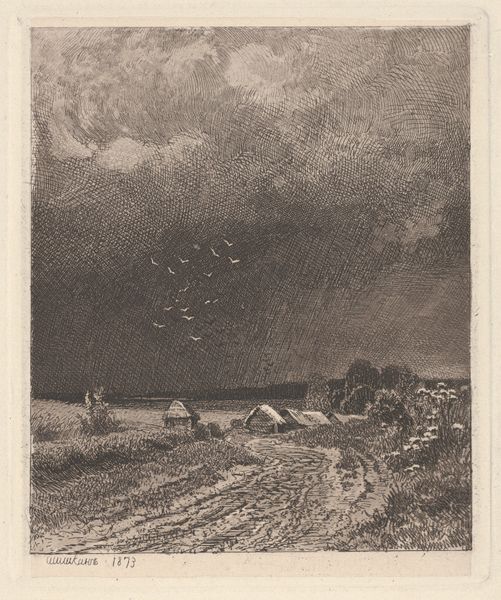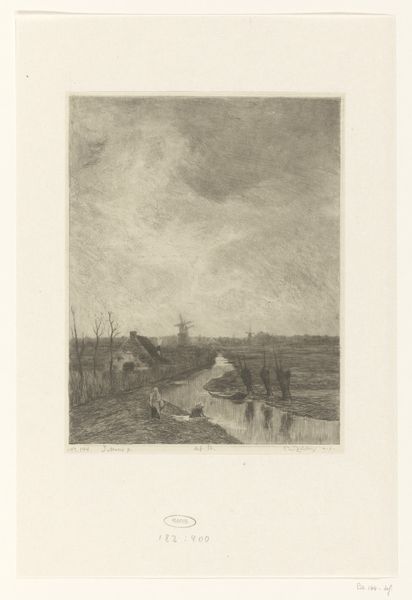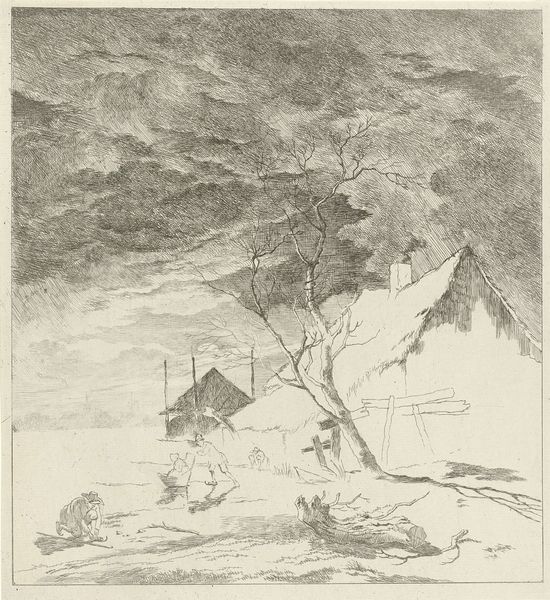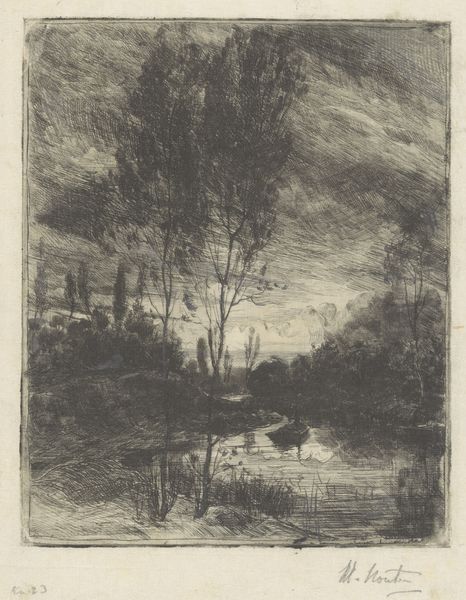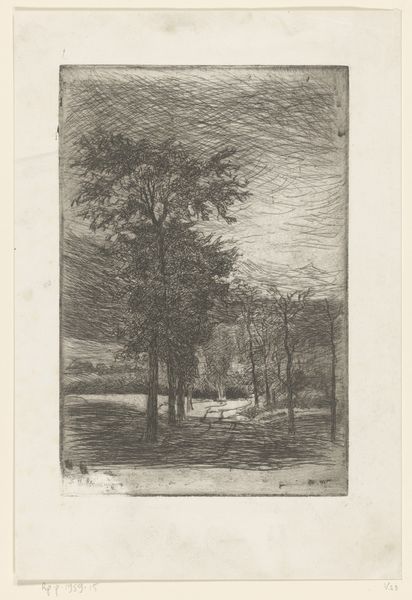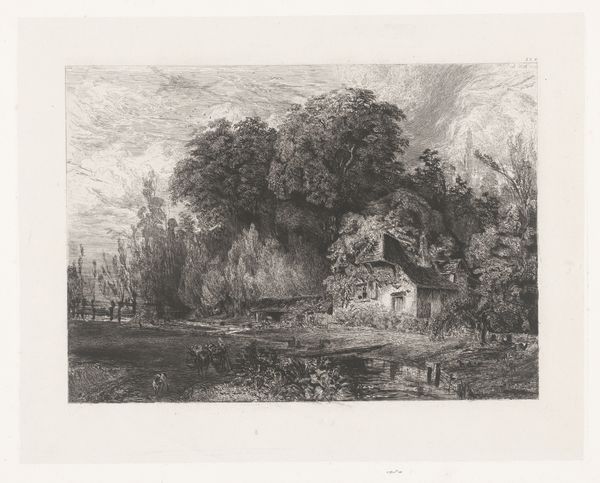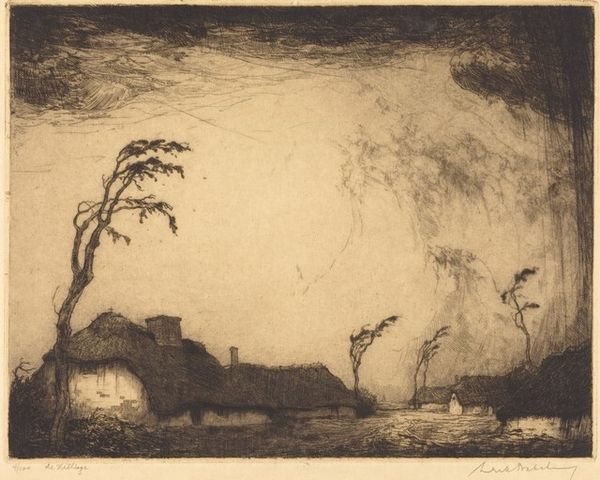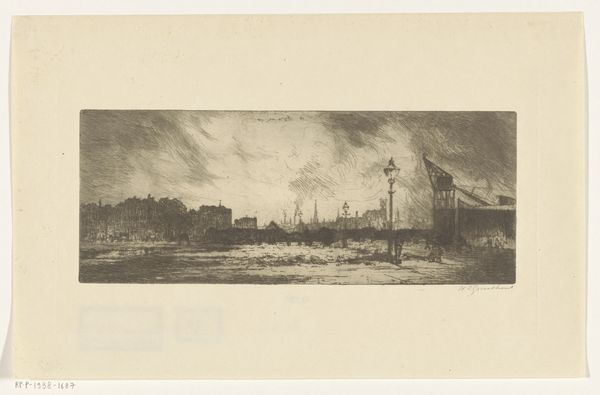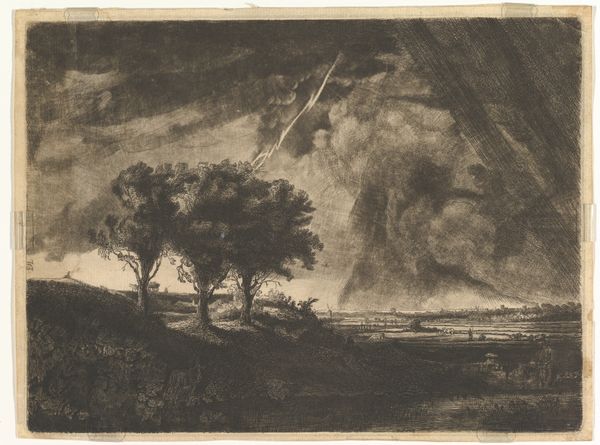
print, etching
#
dutch-golden-age
# print
#
etching
#
landscape
Dimensions: height 211 mm, width 165 mm
Copyright: Rijks Museum: Open Domain
Curator: Here we have Philip Zilcken’s "Weidelandschap met sloot, boerderij en molens," a landscape etching made sometime between 1867 and 1890. Editor: The subdued monochrome palette immediately evokes a feeling of quiet introspection, wouldn’t you agree? The looming sky, heavy with implied rain, definitely sets a somber tone. Curator: Note the etcher's deliberate use of line. Observe how the artist varies the density and direction of marks to render a range of tonal values, creating a sense of atmospheric perspective. The formal arrangement leads the eye from the foreground figures and waterway toward the windmills in the distance. Editor: These subtle gradations work to effectively construct a stark visual hierarchy that serves to remind us of the peasantry as an indelible foundation of a society that literally uses them to elevate its economic achievements. The sky looks as if the hand of God is reaching down to pull them up… or snuff them out. Curator: An interesting interpretation. Perhaps. Consider, however, how Zilcken directs the viewer's eye using the placement of light and dark – see the effect the water has of connecting everything that seems divided? Editor: I'm drawn to the implied narratives within this deceptively simple image. Who are those figures by the canal? What labors are they engaged in, and how does their presence comment on the broader social realities of the Dutch Golden Age? It seems very exploitative, really. Curator: Zilcken's meticulous etching captures the essence of the Dutch landscape tradition. By analyzing his choices in composition, tonality, and line work, we gain insight into how he translated the world around him into a sophisticated work of art. Editor: The atmospheric depth reminds us of our historical positioning—we are still reckoning with many of the same problems—the ever-growing tension of land use and class division, and of finding the fine line that might just lead to true unity, if we could only grasp it.
Comments
No comments
Be the first to comment and join the conversation on the ultimate creative platform.


